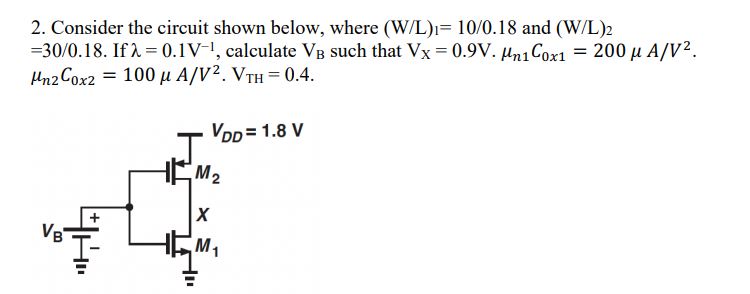Consider the circuit shown below, where (W/L)1 = 10/0.18 and (W/L)2 = 30/0.18. If λ = 0.1 V−1, calculate VB such that VX = 0.9 V⋅ μn1Cox1 = 200 μA/V2. μn2Cox2 = 100 μA/V2⋅ VTH = 0.4 7.13. Consider the circuit shown in Fig. 7.50, where (W/L), = 10/0.18 and (W/L), = 30/0.18. If λ = 0.1 V-1, calculate VB such that Vx = 0.9V.



You'll get a detailed, step-by-step and expert verified solution.
 Work With Experts to Reach at Correct Answers
Work With Experts to Reach at Correct Answers